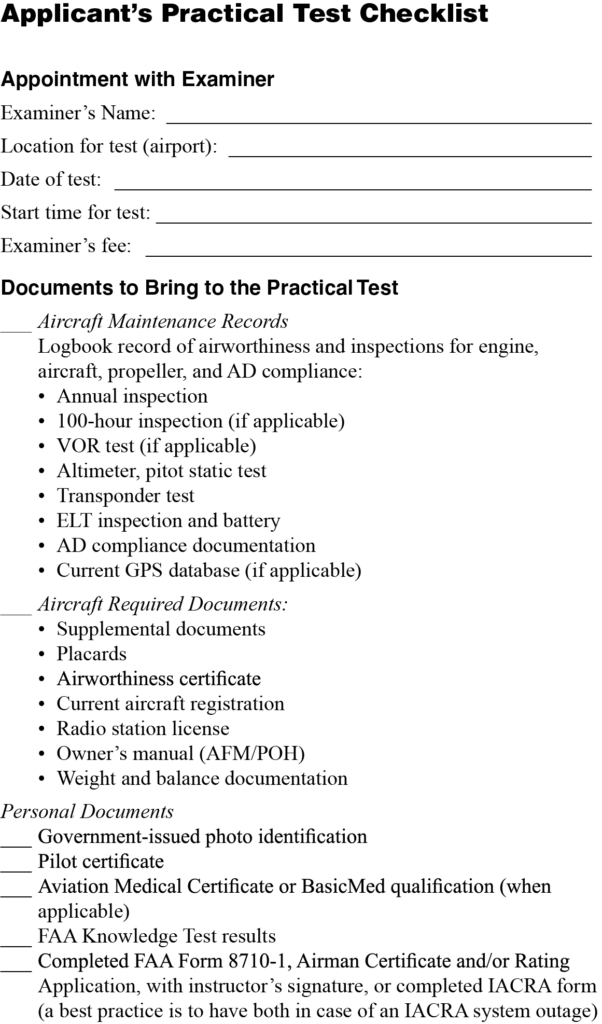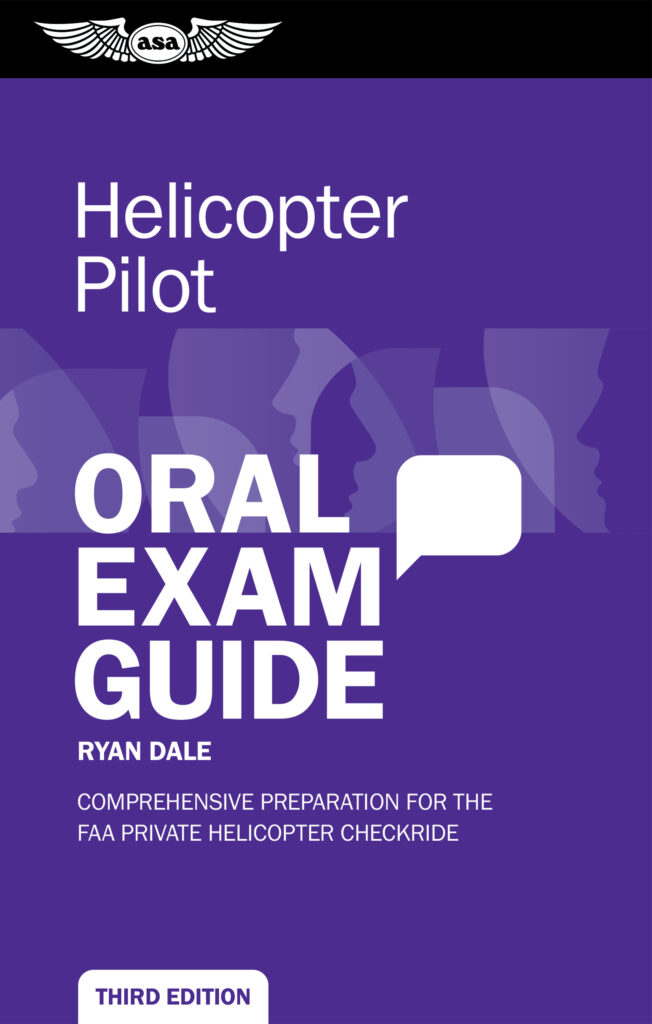On your road to becoming a certified pilot you’ll reach several milestones. Taking classes with an instructor and spending time in the pilot’s seat make up just part of the path. You also must pass both the written FAA Knowledge Test and a FAA practical exam, which includes both an oral exam and practical flight test, often called a checkride. During the practical exam, you must demonstrate certain knowledge, risk management, and skills that are set out by the FAA in their Airman Certification Standards (or Practical Test Standards) for the type of certificate or rating you are looking to achieve.
Throughout the practical flight test, your designated pilot examiner (or DPE) will act as a passenger (they will only touch the controls in emergencies) and will direct you to make a series of maneuvers to ensure that you are competent to fly the aircraft in a safe manner. Before even stepping foot in the aircraft, you must first pass the oral exam portion of the practical exam. During the oral exam your DPE may choose an example scenario that you are then expected to be able to answer questions about. Here’s an example from the Helicopter Pilot Oral Exam Guide by Ryan Dale.
Example Scenario:
You are a private pilot preparing for a day VFR (visual flight rules) flight in a Robinson R44 helicopter from a small municipal airport in the Midwest to a nearby airfield for a leisure trip. The weather forecast is clear with light winds, ideal for VFR conditions. You last flew the helicopter two weeks ago, and it performed without any notable issues. Today, you arrive at the hangar and begin your preflight preparation.
Your task is to determine if the helicopter is airworthy for the planned flight. Consider the following points as you assess the helicopter’s airworthiness:
1. Aircraft documents—Ensure the helicopter has its airworthiness certificate, registration, weight and balance information, and appropriate logbooks available and up to date.
2. Maintenance records—Review the helicopter’s maintenance logbooks. Check for any overdue inspections, outstanding Airworthiness Directives (ADs), and the resolution of any previously noted discrepancies. Confirm the last date of the annual inspection and any applicable 100-hour inspections if the helicopter is used for instruction or hire.
3. Physical inspection—Conduct a thorough preflight inspection. Check for any visible damage or leaks, ensure all control surfaces are free and correct, and verify the integrity of the rotor system. Inspect the fuel level and quality, oil levels, and the condition of the landing gear.
4. Instrument and equipment check—Verify that all required instruments and equipment for day VFR flight are present and functioning correctly. This includes checking the functionality of the communication and navigation systems, engine gauges, and all cockpit controls.
5. Pilot preparation—Reflect on your own readiness. Ensure you have the necessary endorsements, meet recent flight experience requirements for carrying passengers if applicable, and are familiar with the helicopter’s specific model and characteristics. In addition, pilots must meet the requirements set out by SFAR No. 73 [Special Federal Aviation Regulation No. 73—Robinson R–22/R–44 Special Training and Experience Requirements].
During the oral portion of the test, you will be asked to work through the scenario and answer in your own words. Many resources are available to help you prepare, including guides that walk you through many questions and scenarios. A checklist what to do before your practical test is included in the Instrument Pilot Oral Exam Guide (and others) that can help put you at ease as you head to the airport.

While the thought of a practical test may be nerve-racking, remember that your DPE has been through the same test and that, ultimately, they want you to become a safe and capable pilot.





